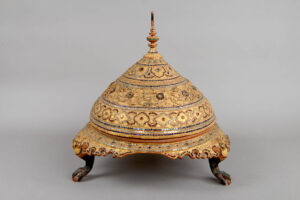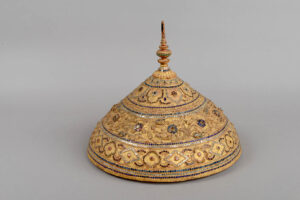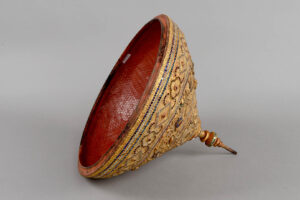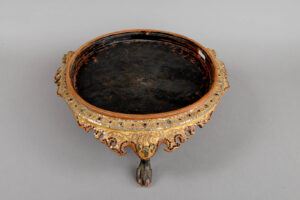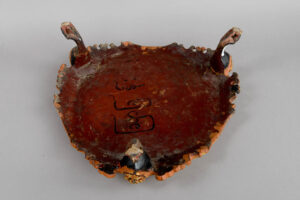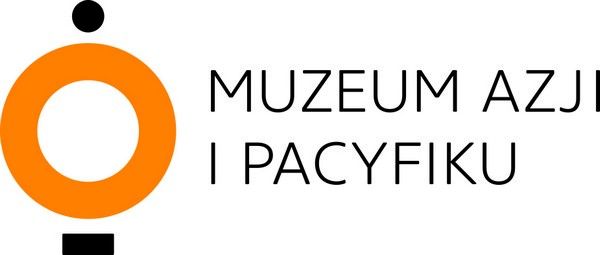Burmese stand | The Exhibit of the Month
While visiting an exhibition, we often don’t have the time to dedicate several minutes to each object – to examine the details or read the description thoroughly. That’s why the curators at the Asia and the Pacific Museum select one object from the collection each month and encourage a closer, more in-depth exploration of its history.
Covered stand daung-baung-kalat [don-bon-kalat]
Myanmar (earlier: Burma), probably 2nd half of the 20th century
bamboo (torn into strips woven together), wood, lacquer, gold leaf, glass
height 63 cm, diameter 61 cm
MAP 20840
A ceremonial covered stand in the form of a dish with a high lid, decorated with a relief in lacquer, glass and gilded. The lower part is round, on three legs similar to bird’s claws, the upper one is a high conical lid with convex side surfaces, topped with a baluster.
Such covered vessels, not necessarily equally richly decorated, are used in Myanmar to offer gifts to Buddhist monasteries.
It is worth paying attention to the technique used to create vessels and containers in Myanmar. These are structures woven from thin bamboo strips, then covered with lacquer so that the structure underneath is often not visible. Such objects are very light. Lacquer is insoluble after drying, gives the vessels resistance to moisture, and is also resistant to chemicals. Presumed dating is based on the state of preservation.
The lower part (the dish) has a flat bottom and a slightly protruding rim, cut in S-shaped lines. The bottom is made of bamboo wickerwork, covered with black lacquer inside and brown on the bottom (there is a single line of text in Burmese script in black on the bottom). The rim is carved in wood (like the legs), decorated with lacquer, thayo lacquer and glass on the upper surface and gilded (gold leaf), and painted brown on the bottom. The legs are brown on the inside, black on the outside.
The upper part (the cover) is also made of bamboo wickerwork covered with red lacquer on the inside; it is a thin layer of lacquer and the weave of the wickerwork is visible. On the outside, it is richly decorated with a relief made of thayo lacquer, and also with glass and gold leaf. Geometric patterns, a spiral plant twig and cartouches in the form of lotus petals are arranged around the circumference in horizontal registers. The baluster crowning the whole is turned from wood and decorated with red lacquer, with the addition of black and covered with gold leaf.
Photo by: Eugeniusz Helbert / the Asia and Pacific Museum

![grafika z tekstem [journeys to the east]](https://www.muzeumazji.pl/maip/uploads/2022/08/baner_strona_english_tn-1140x220.jpg)

